Wanted: Dead or Alive
Edina Merkel shoots her macro subjects—both living and dried-up plants and flowers—with the Tamron SP 90mm F/2.8 VC Macro lens.
More Photo Tips | Video Gallery | Photo Gallery | Enewsletter sign-up
By Jenn Gidman
Images By Edina Merkel
If you ask most photographers what they enjoy taking pictures of, "lovely dead crap" isn't what you'd expect the typical answer to be. Macro photographer Edina Merkel, however, not only seeks out such subjects—dried-up or dead flowers and plants scattered around her yard in Tallmadge, Ohio, or at local parks and gardens—but she has also unearthed a community on Instagram that enjoys that type of photographic fodder so much they've created the #lovelydeadcrap hashtag.
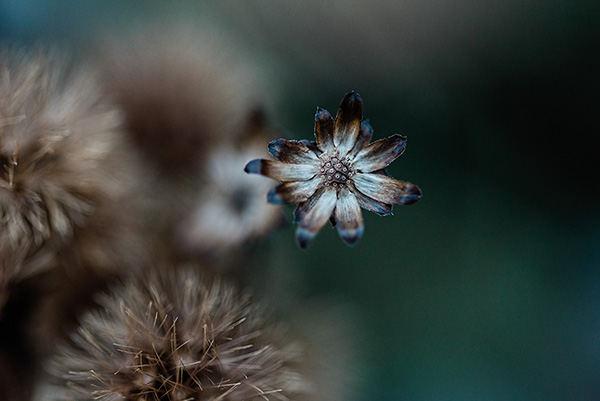
90mm, F/5.6, 1/250th sec., ISO 800
Click image to view larger
"I'll take a picture of thistle or some other weed around the yard that my husband is always trying to get rid of, or a poppy with its petals fallen off, or a dried-up hydrangea," she says. "It's fun to photograph flowers like that, because they're usually made up of warmer earth tones, or they'll form these fuzzy white centers when they're on their last legs. You start learning to appreciate these types of subjects the more you shoot them, because they often reveal amazing details in texture and pattern once the vivid colors have been stripped away. I have more fun with them dead than alive."
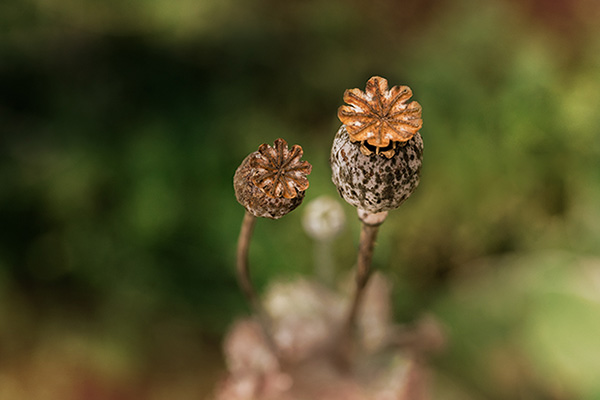
90mm, F/7.1, 1/400th sec., ISO 1250
Click image to view larger
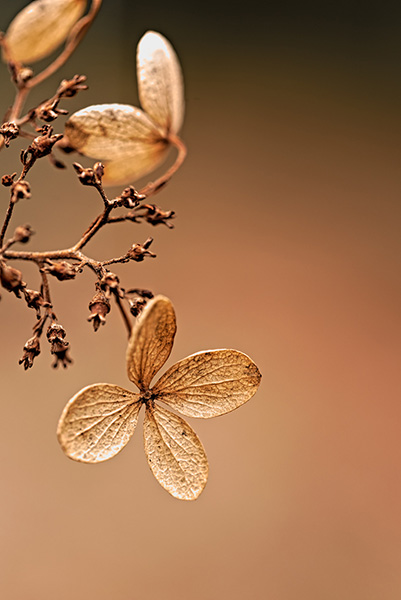
90mm, F/5.6, 1/200th sec., ISO 200
Click image to view larger
To capture this marvelously macabre macro—as well as the very-much-alive, more brilliantly colored plants and flowers she also enjoys shooting—Edina uses the Tamron SP 90mm F/2.8 VC Macro lens. "I started out with the Tamron 60mm initially, but then I upgraded to a full-frame camera and needed a new macro lens to go with it," she says. "I already loved the 60mm, so I knew I had to get my new lens from Tamron. I jumped right on the 90mm. It's so sharp, and I'm able to hold it with one hand during my shoots while my other hand holds or maneuvers the flower or plant I'm photographing."
Edina's favorite time to head outside is in the hours right before sunset. "I don't usually get good results in the harsh sun of midday," she says. "It's too bright and too flat, and the contrast is horrible. If I do end up shooting earlier in the day, I'll seek out shade, or I'll block the sun with my body, or ask anyone who's with me to do so."
Whether she's taking pictures in her backyard, where she and her husband are often tending to their ample supply of flowers and plants, or on a nature hike in a local park, Edina is always on the lookout for the smallest subjects possible. "I've always liked miniature items, ever since I was a little girl," she says. "They're so cute. And so when I look at a flower, it's usually not the entire flower that catches my eye. It's the tip of a leaf, or a tiny bud sticking out—something I can isolate with my camera. In fact, sometimes when I tell my husband that a particular flower is gorgeous, he doesn't understand, because he's not seeing the same thing I'm seeing."
Her eye for the miniscule will often lead Edina in a different direction than the one originally intended. "My husband and I recently went to the Cleveland Botanical Garden, where they had an orchid display," she says. "And I did try to photograph the orchids, but it was difficult. They're such large flowers, and it's hard to get a good angle at the gardens, especially with so many people milling around."
That's when she discovered another area of the museum that featured cactuses. "They had itty-bitty flower buds you could barely see with the naked eye, and I ended up spending most of my time in there instead," she says. "I love just coming in close to those kinds of details."
In addition to the blurred-out backgrounds Edina achieves in most of her photos, she's also learned to appreciate selective focus on the macro subjects themselves. "We have tons of rose bushes, so I'll often head outside and take 10 pictures of the same rose, placing the focus on different parts," she says. "First I'll focus on the center, then on the petal or the stem. You can see that illustrated here with my photo of the pine cone, where the center is super-sharp, but the rest falls off softly. Or in the image of the orange flowers, where I chose to only keep a few of the flowers in the foreground sharp."
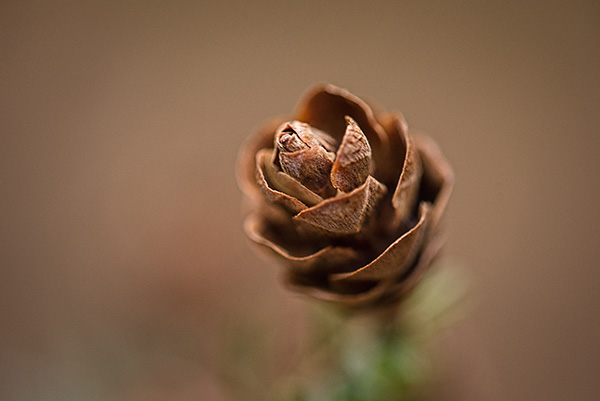
90mm, F/5.3, 1/200th sec., ISO 1250
Click image to view larger
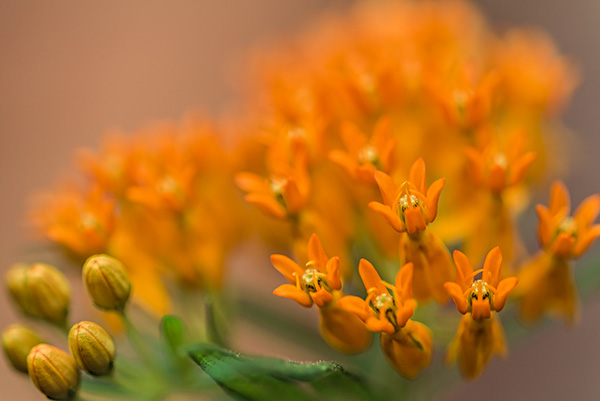
90mm, F/4.8, 1/500th sec., ISO 320
Click image to view larger
When a breeze kicks up—and it can get pretty windy in Ohio—Edina will head inside to shoot in her living room, where she has a large window that lets in lots of available light. "The slightest movement will throw my picture out of focus, so I even stop breathing when I press the shutter," she says. "If it's a really breezy day, I won't even bother going outside to take pictures. The pink orchid you see here was shot inside, and you can't even tell. I placed it on a high stool, using a stained-glass plate as the background."
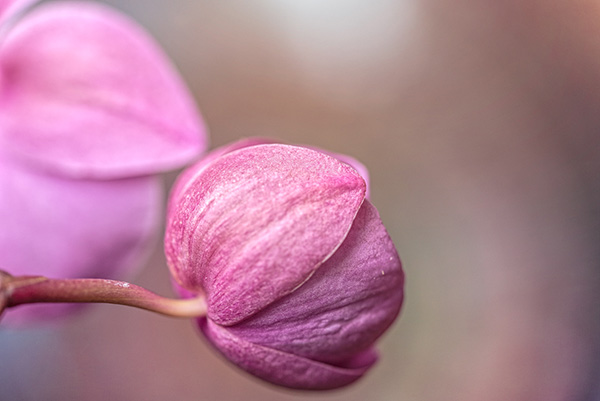
90mm, 1/200th sec., ISO 640
Click image to view larger
Although Edina doesn't often photograph insects ("they move too fast and flit from flower to flower; I don't have the patience for that"), occasionally one will end up in front of her lens. "The ladybug you see here showed up in my car one day when I went for a walk in the park and left my car window open," she says. "I brought it inside my house and placed it on one of my African violets to photograph it."
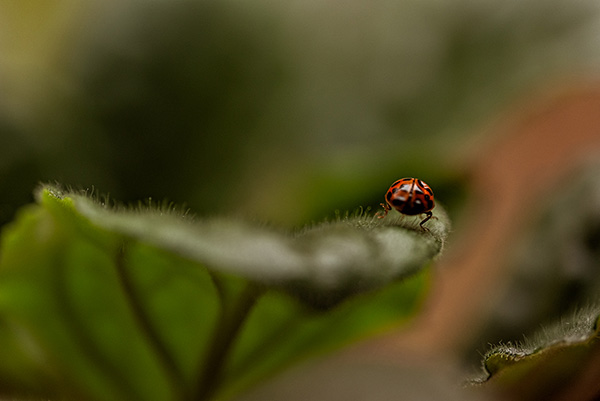
90mm, F/4.8, 1/640th sec., ISO 1250
Click image to view larger
Because she likes to keep her photos looking as natural as possible, Edina doesn't dive too deep into post-processing. "The changes I make are more subtle," she says. "I can tell what the difference is, because I took the photo, but most people wouldn't be able to. I'll tweak the tones in Lightroom to make the image more appealing to the eye, as well as sharpen things a bit. But with macro and nature, presets don't work so well, because if you use a preset, it will change the whole area, not just the part you want to isolate. I use a couple of plug-ins that adjust the detail and clarity of the photo instead."
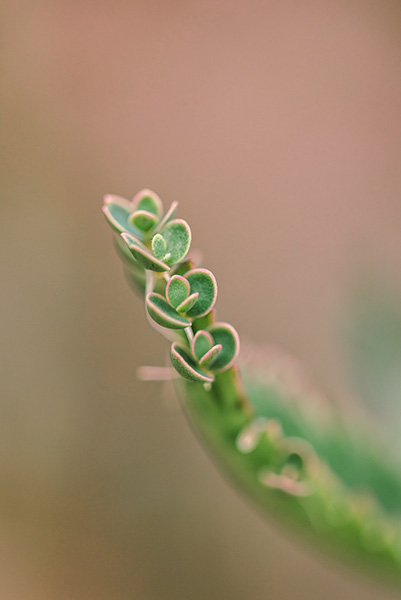
90mm, F/5.0, 1/200th sec., ISO 250
Click image to view larger
Edina is glad she was able to so easily narrow down her photographic specialty. "I know I was meant to do macro," she says. "And I love doing it almost every day—when I miss a day or two, it feels really strange. I've especially found a great community on Instagram, where I'm inspired daily by other photographers, and I can inspire them. I'll have friends tell me that they'll use my images of flowers as the foundation for their drawings or paintings. They'll say, 'Your flowers have helped me get through the winter.' It brings a smile to my face."
To see more of Edina Merkel's work, go to www.edinamerkelphotography.com.
More Photo Tips | Watch Videos | Learn More About Tamron Lenses | Photo Gallery
